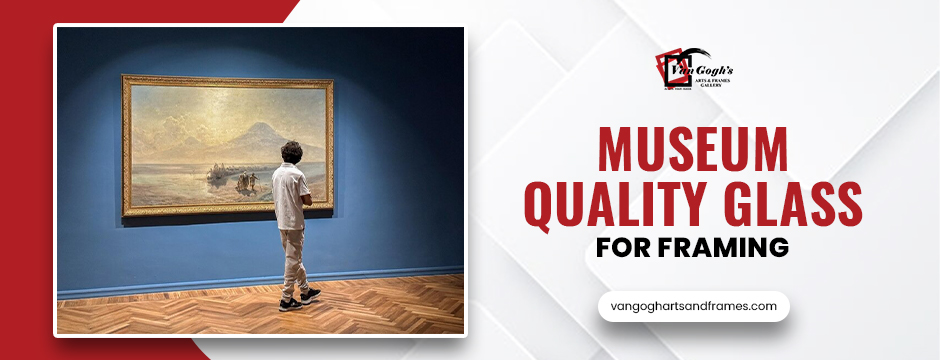Museum quality glass is more than just a protective layer—it’s a crystal-clear window that enhances the beauty of art, photographs, and collectables. Unlike regular glass, it’s designed to reduce glare, resist UV rays, and provide the highest level of visual clarity. Because of these unique qualities, maintaining it requires extra care. Traditional cleaning methods that work fine for regular glass may actually damage museum glass, leaving scratches, streaks, or even compromising its special coatings.
Whether you’re a collector with framed artworks, a gallery owner, or simply someone who wants to preserve family heirlooms, learning the right way to clean and maintain museum-quality glass is essential. Proper care not only keeps your glass spotless but also ensures the longevity of the treasures it protects. In this blog, we’ll explore the do’s and don’ts of cleaning museum glass, the tools and solutions you should use, step-by-step cleaning techniques, and preventive maintenance tips.
Understanding Museum Quality Glass
Museum-quality glass is specifically engineered to provide superior clarity and protection. Its main features include:
- Anti-reflective coating: Reduces glare, allowing true colours and details to shine.
- UV protection: Shields artwork from harmful rays that cause fading.
- Scratch resistance: Provides durability but still requires careful handling.
Because of these coatings and treatments, the surface is more delicate than it looks. Using harsh chemicals or abrasive materials can strip away its protective properties.
Common Mistakes to Avoid When Cleaning
Before we get into the right techniques, it’s important to understand what not to do:
- Avoid ammonia-based cleaners – Products like standard window sprays can damage coatings.
- Don’t use paper towels or rough cloths – These can scratch the surface.
- Never spray directly on the glass – Excess liquid can seep into the frame and damage artwork.
- Don’t press too hard – Even if a smudge is stubborn, forceful scrubbing can leave micro-scratches.
The Right Tools for Cleaning Museum Glass
To keep museum quality glass spotless, you’ll need the following safe tools:
- Microfiber cloths: Soft, lint-free, and ideal for delicate surfaces.
- pH-neutral cleaner: Specifically designed for coated glass.
- Distilled water: Prevents mineral deposits or streaks.
- Cotton gloves: Avoid fingerprints when handling framed pieces.
Step-by-Step Cleaning Guide
- Prepare the area – Place the artwork on a flat, padded surface. If the piece is large, have someone assist you.
- Dust first – Use a soft microfiber cloth or an air blower to gently remove dust.
- Apply cleaner to the cloth – Never spray directly on the glass. Lightly mist your microfiber cloth with distilled water or an approved cleaner.
- Wipe gently – Use light, circular motions to clean the glass. Avoid the frame edges.
- Dry with a clean cloth – Immediately follow up with a dry microfiber to prevent streaks.
Preventive Maintenance Tips
- Handle with gloves: This avoids oils and fingerprints.
- Keep away from direct sunlight: Even with UV protection, prolonged exposure can cause damage.
- Control humidity: High moisture can affect both glass and artwork.
- Regular dusting: Prevents buildup that requires deeper cleaning.
- Use proper framing: A sealed frame keeps dust and pollutants out.
Long-Term Care for Museum Glass
Cleaning should be occasional, not frequent. Over-cleaning can wear down coatings. Instead, focus on preventive measures—placing your artwork in safe, controlled environments and limiting unnecessary handling. If stubborn marks or damage appear, consider professional cleaning rather than taking risks.
When to Call a Professional?
Sometimes, DIY cleaning isn’t enough—especially if your museum glass has stubborn stains, residue from improper cleaning products, or if the frame itself is delicate or antique. Professional conservators and framers have access to specialised tools and safe cleaning solutions that can restore museum quality glass for framing without risking damage to your art.
If you own high-value artwork or heirlooms, it’s always worth consulting experts rather than experimenting. This extra step ensures both the glass and the artwork inside remain in perfect condition.
Best Storage and Display Practices
Beyond cleaning, where and how you store or display your framed pieces plays a crucial role in maintaining museum glass. Here are some smart practices:
- Avoid direct airflow: Keep frames away from air vents, radiators, or fireplaces that can cause temperature fluctuations.
- Choose the right wall: Place artwork on interior walls instead of exterior ones, which may experience condensation or humidity changes.
- Use protective covers during storage: If pieces aren’t displayed, wrap them in acid-free paper and keep them in climate-controlled storage.
- Mind the hanging hardware: Ensure frames are hung securely to prevent accidents that could crack or scratch the glass.
- Avoid overcrowding: When storing multiple frames, keep them separated with soft padding to prevent accidental friction.
Proper storage and thoughtful display not only protect the glass but also safeguard the integrity of the artwork itself.
End Notes

Caring for museum quality glass requires patience, the right materials, and a gentle approach. By avoiding harsh cleaners, using microfiber cloths, and following preventive care practices, you can keep your framed art and collectables looking flawless for years. Remember, the purpose of museum glass is to protect and showcase what matters most—it deserves the same level of protection in return.
If you’re looking for professional framing and museum-quality glass solutions that not only protect but also enhance your artwork, Vangogh Arts & Frames offers expert craftsmanship and premium materials. Our dedication ensures that your art remains as timeless as the day you first displayed it.